How did your neighbor vote in the 2016 Spanish election?
This map provides a detailed look at which political parties won in each census section in Spain
Recent polls suggest the political landscape of Spain could shift dramatically at the upcoming general election on April 28 – with the far-right party Vox gaining congressional representation for the first time, the conservative Popular Party (PP) set to lose up to half its seats, and the Socialist Party (PSOE) gaining up to 30% of the vote.
But how did Spain vote at the 2016 general election? We know that the PP won the highest number of seats and that the anti-austerity Podemos triumphed in the Basque Country and Catalonia – but how did each neighborhood vote?
Here are some of the most striking results from the last election, according to each census section. Each neighborhood is colored according to the party which won there – blue represents the PP, red is the PSOE, purple is Podemos, yellow is the Catalan European Democratic Party (PDeCat), which supports Catalan independence, and green is the Basque Nationalist Party (PNV).
Salamanca neighborhood in Madrid. The PP was the most-voted party in many areas of Madrid but its victory in upscale Salamanca was overwhelming. In many blocks, it won more than 80% of the vote. It missed out on some areas near the center of the Spanish capital, where Podemos received the highest number of votes.

Barcelona – Podemos wave. Podemos swept to victory in what used to be known as the red belt of the Catalan capital because of traditional voter preference for the PSOE. The PP held on only in the upper part of the city, where residents have the highest income, where people also voted for PDeCat.
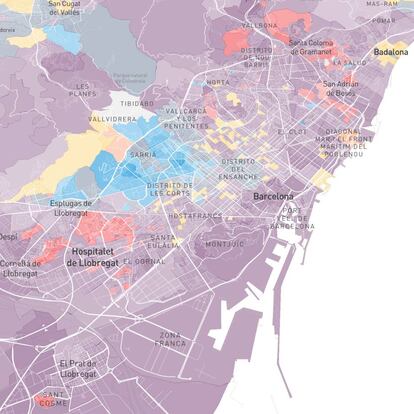
Gran Canaria. The Canaries Coalition may have made gains in the Canary Islands, but in Gran Canaria, the PP was the big winner at the 2016 election.
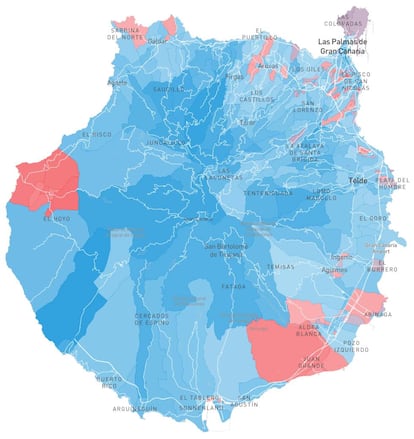
Asturias – the mining basin. The PP was the most-voted party in most municipalities in Asturias, with the exception of Gijón. In this mining basin south of Oviedo, the vote was shared between PSOE and Podemos.
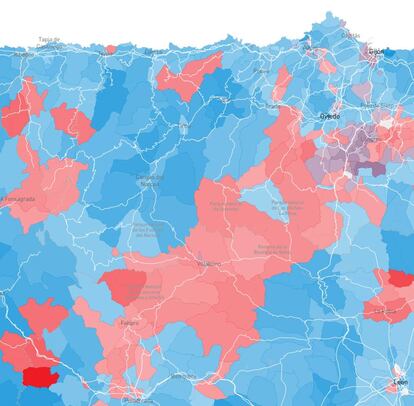
Lugo – PP stronghold. The founder of the PP, Manuel Fraga, was a very popular politician in Galicia, but it is in his home province of Lugo where he really left a mark. At the general election in 2016, the PP won in every neighborhood.

Almería – the first signs of Vox. At the regional elections in Andalusia, Vox won 15% of the vote in Almería. It achieved its best results in the census areas shown in this map as a deepest blue.
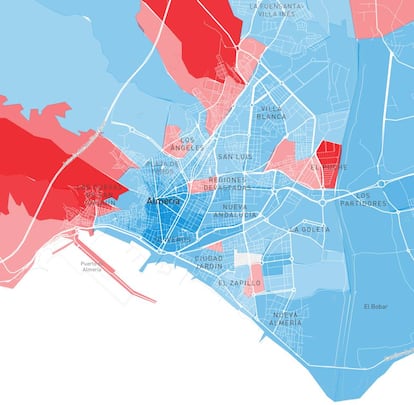
Bilbao. In the Basque Country, Podemos received the highest number of votes. In Bilbao, the vote in the city was largely shared out between Podemos and the PNV.

Catalonia – the border with Aragón. This map shows the contrast between votes in Aragón on the left and Catalonia on the right. Left of the border, most areas voted for the PP and the PSOE, while to its right, Podemos and two pro-Catalan independence parties – Democratic Convergence of Catalonia (CDC) and the Catalan Republican Left (ERC) – were the winners.
Girona. In this Catalan city, the ERC and PDeCat had most success in the areas near the Onyar river. On the outskirts, in areas like Font de la Pólvora, PSOE and Podemos received the highest number of votes.
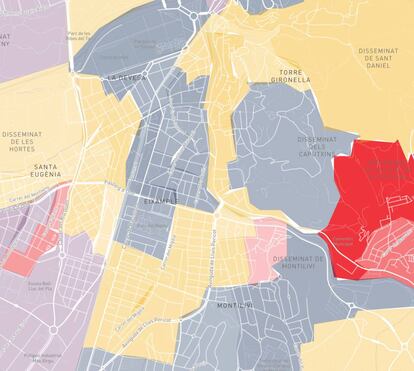
Pozuelo – 16 votes for Podemos. Just outside Madrid, in Pozuelo de Alarcón, one of the wealthiest municipalities in Spain, there is only one census section where the PP did not win. In the exclusive area of La Finca, which is home to more than 1,500 people, only 16 people voted for Podemos.
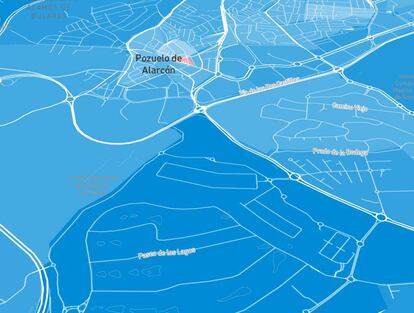
Alicante – a neighborhood that did not vote. The neighborhood Mil Viviendas in Alicante had one of the highest levels of voter abstention. Only 26% of residents in the area voted and almost half voted for the PSOE.
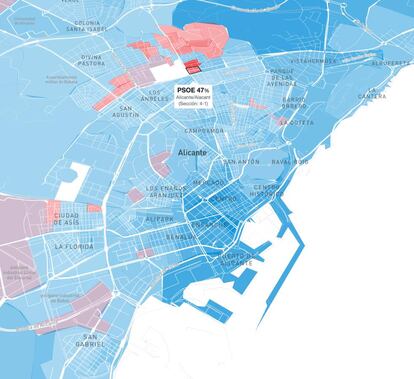
English version by Melissa Kitson.

